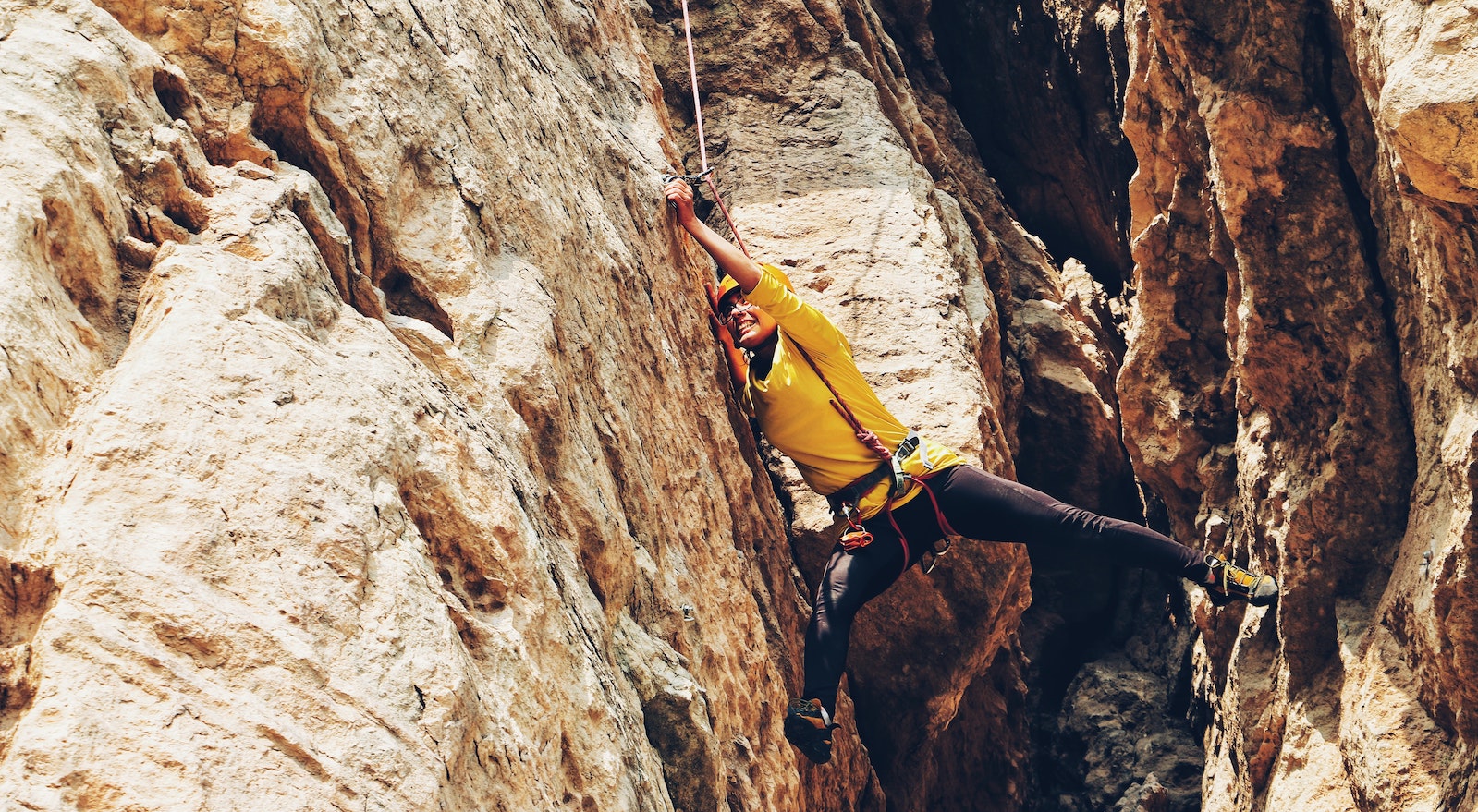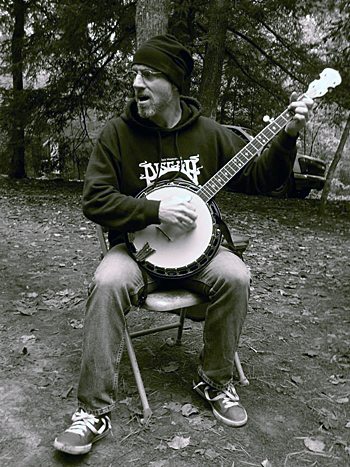I started climbing in East Tennessee in 1991 when I was 19. After a few friends and I discovered climbing, we literally threw ourselves headlong at the rocks. Headlong means with reckless haste. It was dangerous. There were no guides to learn from. No sage mentors. No internet. In the absence of sensible and measured development, we made lots of mistakes and had more close calls and near-miss climbing accidents than I have time to recount. I’ve been lucky.
Those lucky breaks, however, instilled in me a healthy fear of this sport—an ever-present vigilance that one little error could mean the end for me or my partners. This kind of attitude and approach seems to be lacking these days. As climbing becomes a gym-centric culture bleeding into the outdoors, there is strong evidence that we are amid a crisis of mentorship and humility.
So this is my friendly PSA to all climbers:
CLIMBING IS DANGEROUS and an error could COST YOU YOUR LIFE.
This may seem obvious. Yet here are just a few examples of the kinds of behavior I have recently witnessed at my local crags:
Clipping into a backpack sternum strap: I watched a person clip into an anchor at the top of a 100-foot cliff with the sternum strap of their pack. I’ll say that again. They clipped in with their f-ing sternum strap! Then they fumbled correctly loading their GriGri for rappel. Horrified, I stepped in to help set up the rappel—but not before I clipped them into the anchor via their harness. FYI, sternum straps on packs are not weight-bearing!
Novice belayer nearly drops novice leader: The leader didn’t really know how to lead … but what was really disconcerting was that the belayer knew even less about how to belay! Please learn to belay before you climb and don’t let inexperienced belayers belay you on your first leads! This is dangerous!
Clusterf—ing the rope: So what if the rope gets tangled? Well, people get dropped that way, as I recently witnessed. Learning to deal with basic things, such as rope management at anchors, prevents accidents!
Cleaning the draws on top rope—then “cleaning” the draws at the anchor: A top-roping climber was so into unclipping the draws on his top rope that he mistakenly unclipped the ones at the anchor. At first he didn’t even realize that he was now free soloing 60 feet up a wall. When he did, he freaked out predictably—though fortunately he got it together and lived through this dangerous situation. Do NOT remove the draws holding your top rope until your rope is threaded through the anchor, please.
Skipping Clips. I was the first responder for a person who skipped a bolt, then blew the next clip. He decked. Yes, I know Adam Ondra skips bolts—you are not Adam Ondra. If you skip a clip, do not blow your next clip—especially close to the ground. (And if you are Adam Ondra, this goes for you, too.) Better to be conservative. Down climb, if possible. Grab the draw. Let your belayer know you’re about to fall. Build an intuitive understanding of how much rope is between you and a ground fall.
Dying. Recently, someone blew a clip and fell to their death on a sport climb nearby. This is terrible and tragic—but also preventable. This is why I’m writing this PSA. Even if you think you’re experienced, you probably don’t know as much as you should and you’re likely prone to making careless errors. Let’s not forget. CLIMBING IS DANGEROUS and an error could cost you your life.
So what do we do about it? Here are some tips for preventing climbing accidents from my 30 years in the sport:
Never Stop Learning
I don’t care if you’re a rank beginner or Babsi Zangerl. There’s always more to learn about climbing systems. Begin by understanding the basics as deeply as you can. Learn the basic knots, then learn the harder ones. Learn to manage your belay space. Can you escape a belay? Practice rappelling. Practice clipping. Practice placing gear. Practice falling. Learn to rescue an injured leader. Does your gym have a class for all this stuff? Hire a guide, ask an experienced friend. There is no level of success you could ever reach in climbing that would excuse you from being a lifelong student.
Develop Your Intuition and Avoid Partner Pressure
How do you feel today? Where is your head? Paying attention to these signals can be important to your safety. Listening to these signals will help keep you out of trouble.
For example, in the summer of 2008 a friend and I set off to climb Mt. Slesse in the Canadian Rockies. To access this 2,000-foot fang of rock we had to cross under a glacier. We were late, and that day was the hottest one of the year. The sun was already on the ice. When we reached the glacier I was terrified and wanted to turn back. My partner was cavalier and pressured me to keep going. I caved. We sprinted across the dusty granite. A 200-yard dash for our lives. Not 5 minutes after we arrived to the safety of the start of our route the entire glacier fell down the mountain.
Every fiber of my being said not to go below that glacier. I didn’t listen and almost died as a result. Despite the climb being amazing, I regret that decision to this day. Develop your intuition and don’t let partners pressure you when climbing in dangerous settings. Remember the mantra of Letting the Weakest Lead.
Know When to Back Off
In climbing we’re understandably most focused on climbing up. We’re focused on sending. But you need to learn to recognize when something is beyond your skill. Just because you’ve climbed a 5.12 doesn’t mean you are a 5.12 climber. You can die on a 5.5 just as fast as you can on 5.12. You have to know when to back off. Don’t let your clever ego try to keep you from knowing when it’s time to climb down or go down.
Know How to Back Off
Knowing when to back off is one thing; knowing how to do it best is quite another. How to bail is way under rated. This could be as simple as knowing how to down climb from a run-out position to a safer one. Or it could be mean knowing how to descend a complicated multi-pitch cliff face with your own rack.
You will someday find yourself climbing in a dangerous situation where there may be no acceptable gear to lower from and falling is unthinkable. Keeping a cool head and turning tail is an undervalued skill in our sport. There is no shame in it. Practice down climbing down routes on TR so that you can do it on lead.
Be Humble and Climb to Climb Another Day
Gravity doesn’t care if you’ve climbed Perfecto Mundo. An avalanche will bury the expert as well as the novice. Loose rock can smash the head of the master as brutally as it will the student. Today you’re the best in the world. Tomorrow you are a memory. Don’t forget how quickly things can change.
Be humble. Know when to say when. Know your limits. Know yourself. Know your craft and practice it relentlessly. Enjoy the slow process.
When you joined that climbing gym you entered into a risky new world. A world that is fraught with dangers big and small. It’s much worse than you realize. But it can also be better than you realize. Climbing can be magical too, perhaps because it’s dangerous. Tread lightly, tread respectfully, take it slow, and enjoy the ride. If you do it right, it’s a sport you’ll be able to enjoy your whole life. Your goal should always be to live to climb another day.
Share Your Stories!
What’s the sketchiest shit you’ve seen at the crags lately? Share your stories in the comments below to be featured in the next Evening Sends newsletter.




Was at a popular spot near Estes park and a couple showed up with about 10 kids all under 12 years old. Naturally, they set up right beside us. Well, dad went up top to rig a TR while mom was left to wrangle the kids. During the ensuing screaming match between them, dad yells ” safety is not the issue ” .
We got out of there. Hope they all lived.
Nice Brad…come up to Alaska. -Greg